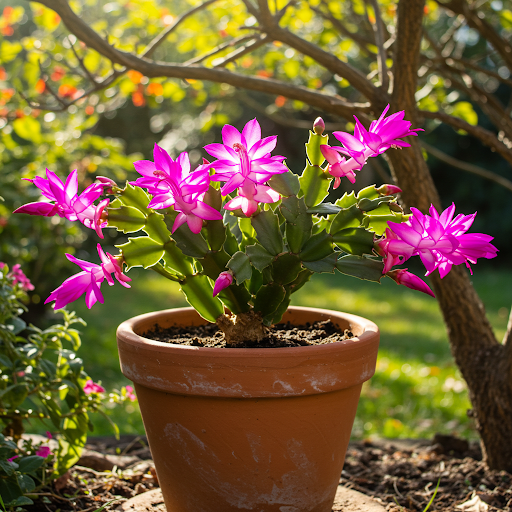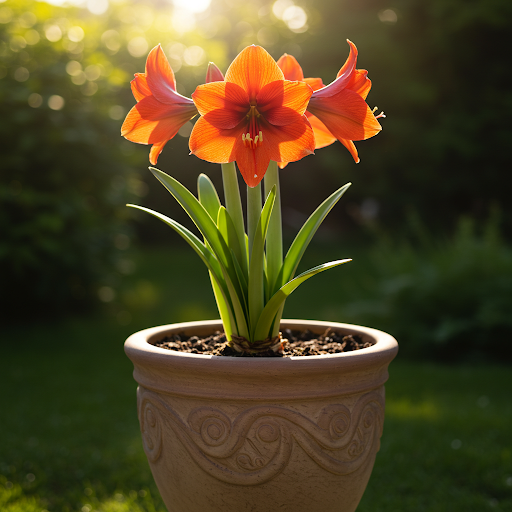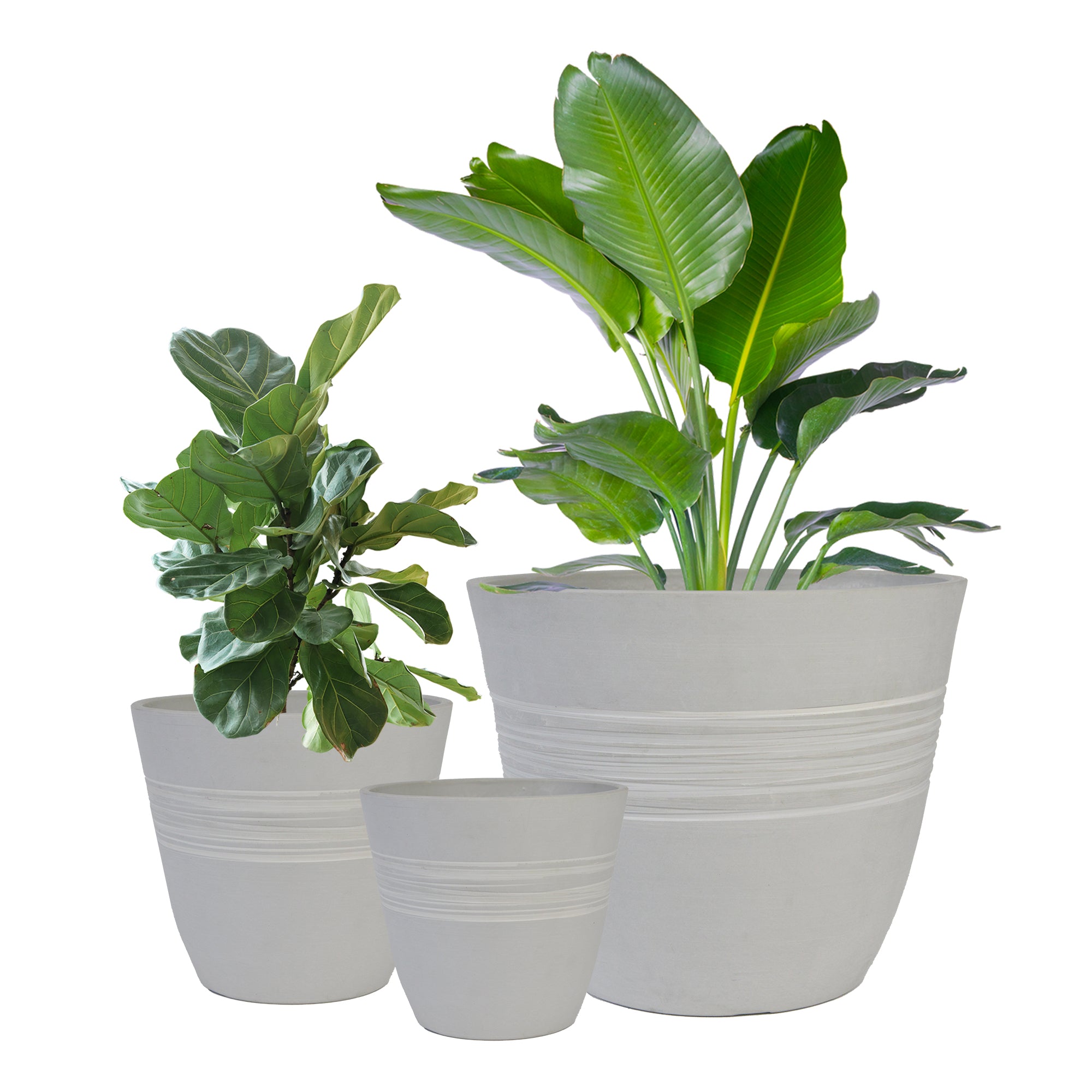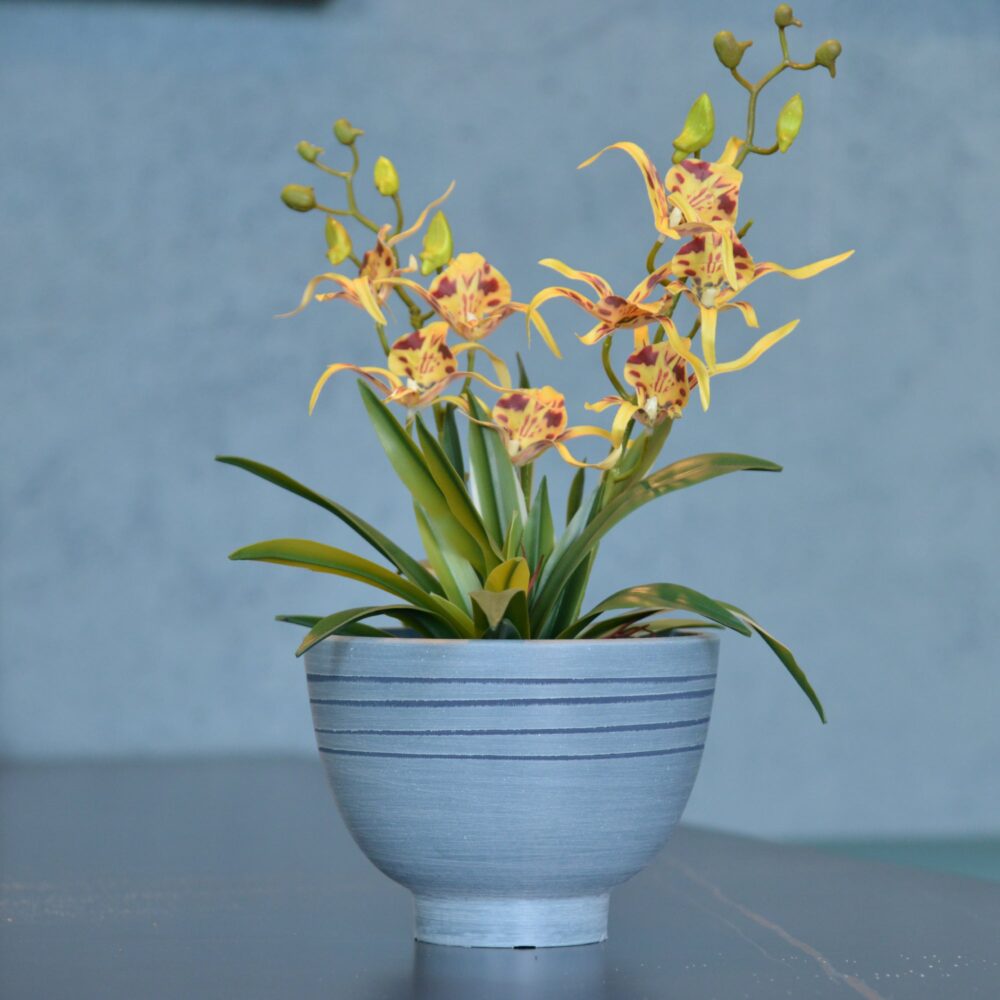Top 3 Winter Potted Plants for Women: Blooming Beauty & Easy Care for Cozy Homes (Perfect for Winter Gardens!)
Want to bring life and color to your home during the winter months? For middle-aged women looking to enjoy gardening indoors or on patios during the cooler season, certain plants are especially well-suited for container growing and offer beautiful blooms or foliage with relatively easy care. This guide highlights the top 3 winter-blooming or winter-interest plants perfect for women to grow in pots, bringing warmth, beauty, and a touch of nature indoors or to sheltered outdoor spaces during winter. Discover these delightful and manageable plants to brighten up the winter season!
Top 3 Winter Potted Flowers & Plants for Women:
Here are three excellent choices for winter potted plants, selected for their winter interest, ease of care, and appeal to middle-aged women:
- Christmas Cactus (Schlumbergera): Unique winter blooms, shade-tolerant, low-maintenance, long-lasting flowers.
- Amaryllis (Hippeastrum): Spectacular large blooms, easy to force indoors, impressive and dramatic flowers.
- Camellia (Camellia japonica): Elegant winter/early spring blooms, shade-tolerant, classic and refined beauty.
Let’s explore each of these top 3 winter plants in more detail:
1. Christmas Cactus (Schlumbergera)
- Plant Type: Epiphytic cactus
- Why it’s great for women in winter: Christmas Cactus is a classic winter-blooming plant known for its unique and beautiful flowers that appear around the Christmas season (or slightly before or after). It’s shade-tolerant, low-maintenance, and relatively easy to grow indoors in pots. Its long-lasting blooms in shades of pink, red, white, and purple bring festive color to homes during the winter months. It’s also a long-lived plant that can be passed down through generations.
- Flowering Season (花期): Winter (typically late fall to early winter, around Christmas time)
- Cold & Heat Tolerance (耐寒热): Prefers moderate temperatures, not truly cold-hardy (best indoors in winter in most climates), protect from frost. Enjoys average room temperatures during winter blooming.
- Sun & Shade (喜阴阳): Partial shade to shade is ideal. Avoid direct, intense sunlight, especially in summer, which can scorch the leaves (pads). Bright indirect light is best, especially during the blooming period. Can tolerate lower light conditions but may bloom less profusely.
- How to Plant & Grow (如何种植):
- Potting Mix: Use a well-draining potting mix, such as a cactus and succulent mix, or a mix of potting soil, perlite, and orchid bark for good drainage and aeration.
- Watering: Water thoroughly when the top inch of soil feels dry, then allow the soil to dry out slightly between waterings. Avoid overwatering, especially in winter, which can lead to root rot. Reduce watering slightly after blooming and during the dormant period (spring/summer).
- Fertilizing: Fertilize sparingly. Feed with a balanced liquid fertilizer diluted to half strength only during the active growth period (spring and summer) and when buds are forming in fall. Do not fertilize during the dormant period or during blooming.
- Temperature & Light for Budding: To encourage blooming, provide cooler temperatures (around 50-60°F or 10-15°C) and shorter day lengths (long, dark nights) starting in the fall. Reduce watering slightly in fall to encourage bud formation.
- Repotting: Repot only every 2-3 years or when the plant becomes root-bound, in spring after blooming. Use a pot only slightly larger than the previous one.
- Suitable Flower Pots: Terracotta pots (good drainage and aeration), ceramic pots, plastic pots (ensure good drainage). Choose pots that are not too large, as Christmas cacti bloom best when slightly root-bound. Pots with drainage holes are essential. Decorative pots that complement the festive winter season can be chosen.
- Wikipedia Link: Christmas Cactus

Christmas Cactus
2. Amaryllis (Hippeastrum)
- Plant Type: Bulbous perennial
- Why it’s great for women in winter: Amaryllis are famous for their spectacularly large and showy flowers that bloom indoors in winter when many gardens are dormant. They are easy to force into bloom, making them a rewarding winter gardening project. Their impressive, trumpet-shaped flowers come in vibrant colors like red, pink, white, and bi-colors, bringing drama and elegance to winter homes. They are also relatively easy to care for as potted plants.
- Flowering Season (花期): Winter (typically December to February when forced indoors)
- Cold & Heat Tolerance (耐寒热): Not cold-hardy (bulbs are tender), needs to be grown indoors in most climates during winter. Prefers average room temperatures during forcing and blooming.
- Sun & Shade (喜阴阳): Bright indirect light is best when forcing bulbs and during blooming. Once in active growth and blooming, they appreciate bright light to maintain strong stems and vibrant flower color. Avoid direct, harsh sunlight, which can scorch leaves.
- How to Plant & Grow (如何种植):
- Potting Mix: Use a well-draining potting mix, such as a general-purpose mix amended with perlite or coarse sand.
- Planting Bulbs: Plant bulbs in fall or early winter for winter blooms. Choose a pot that is only slightly larger than the bulb, leaving about 1-2 inches of space around the bulb. Plant the bulb with the pointed neck facing upwards, with the top third of the bulb above the soil line.
- Watering: Water sparingly initially after planting until growth appears. Once growth starts, water more regularly, keeping the soil consistently moist but not waterlogged. Water thoroughly when the top inch of soil feels slightly dry. Reduce watering after blooming and allow foliage to die back naturally.
- Fertilizing: Fertilize sparingly. Feed with a balanced liquid fertilizer diluted to half strength only when active growth begins and during blooming. Do not fertilize during the initial planting phase or dormant period.
- Forcing Blooms: To force winter blooms, provide a cool, dark period after planting (around 6-8 weeks at 50-60°F or 10-15°C) to initiate flower bud development, then move to a warmer, brighter location to encourage blooming.
- After Blooming: After flowers fade, cut off the flower stalk but retain the foliage. Continue to water and fertilize sparingly to allow the bulb to replenish its energy. In warmer climates, bulbs can be planted outdoors in the garden after danger of frost has passed, or bulbs can be kept dormant and re-forced again the following winter.
- Suitable Flower Pots: Ceramic pots, terracotta pots, decorative bulb pots, plastic pots. Choose pots that are sturdy enough to support the tall, heavy flower stalks and are only slightly larger than the bulb. Drainage holes are essential. Elegant and decorative pots enhance the dramatic blooms.
- Wikipedia Link: Amaryllis

Amaryllis
3. Camellia (Camellia japonica)
- Plant Type: Evergreen shrub
- Why it’s great for women in winter: Camellias are known for their elegant and refined winter to early spring blooms, bringing sophisticated beauty to gardens and homes when many other plants are dormant. Camellia japonica varieties offer a wide range of flower forms and colors, from classic formal doubles to informal singles, in shades of pink, red, white, and variegated patterns. They are shade-tolerant, relatively low-maintenance once established, and their glossy evergreen foliage provides year-round beauty. Camellias bring a touch of classic Southern charm and timeless elegance to courtyard or sheltered patio settings.
- Flowering Season (花期): Winter to early spring (depending on variety, some bloom in late fall, others in early spring)
- Cold & Heat Tolerance (耐寒热): Hardy in zones 7-9 (some varieties to zone 6 with protection), prefers mild to moderate temperatures, can benefit from afternoon shade in warmer climates. Protect from harsh winter winds in colder zones.
- Sun & Shade (喜阴阳): Partial shade to shade is ideal. Morning sun and afternoon shade is often perfect. Avoid harsh afternoon sun, which can scorch leaves and fade flowers. Dappled shade under trees is excellent. Some varieties tolerate more sun, but generally prefer shade.
- How to Plant & Grow (如何种植):
- Potting Mix: Use an acidic potting mix formulated for azaleas, rhododendrons, or camellias, or amend a general-purpose mix with peat moss and compost to create acidic conditions. Ensure good drainage.
- Watering: Camellias prefer consistently moist soil, but not waterlogged. Water thoroughly when the top inch of soil feels slightly dry. Water deeply, especially during dry periods and when buds are forming. Avoid letting the soil dry out completely, but also avoid overwatering and soggy soil. Use rainwater or filtered water if tap water is hard or alkaline, as they prefer slightly acidic water.
- Fertilizing: Fertilize in early spring after blooming and again lightly in late spring or early summer with an acid-loving plant fertilizer formulated for camellias, azaleas, or rhododendrons. Follow product label instructions for application rates. Avoid over-fertilizing. Do not fertilize in late summer or fall.
- Pruning: Prune lightly after flowering to shape the shrub and remove any dead or crossing branches. Minimal pruning is usually needed.
- Winter Protection: In colder zones (zone 6 or colder), potted camellias may need winter protection. Move pots to a sheltered location (unheated garage, cold frame, or against a building foundation) to protect roots from freezing and harsh winter winds. Insulate pots if needed.
- Repotting: Repot every 2-3 years in spring after blooming, using fresh acidic potting mix. Choose a pot only slightly larger than the previous one.
- Suitable Flower Pots: Ceramic pots, terracotta pots, stone pots, resin pots, wooden planters. Choose pots that are large and deep enough to accommodate their root system and provide good stability for these shrubs. Pots in classic or elegant styles enhance their refined beauty. Ensure pots have drainage holes.

Camellia
11TH
By greenship|2024-08-13T02:50:25+00:00August 13, 2024|Categories: Hand-carving Series|
KC2-21G
By greenship|2024-08-13T06:19:08+00:00August 13, 2024|Categories: Hand-carving Series|
k2-21G
By greenship|2024-08-13T06:17:26+00:00August 13, 2024|Categories: Hand-carving Series|
KC3-14A
By greenship|2024-08-16T06:26:30+00:00August 16, 2024|Categories: Hand-carving Series|
Plant Pots 6 inch 8 inch 12 inch for Indoor Outdoor Plants, Set of 3 Modern Decorative Planter with Drainage Hole, Decorative Flower Pots
By greenship-seo|2025-04-10T06:38:40+00:00January 16, 2025|Categories: Hand-carving Series|Tags: Decorative Flower Pots|
8 inch/10 inch Planter Indoor Plants, 2 Pack Modern Decorative Plant Pots with Drainage Hole, Cute Bowl Shape Flower Pots
By greenship-seo|2025-04-10T08:03:42+00:00January 9, 2025|Categories: Hand-carving Series|Tags: Decorative Flower Pots, Self-Watering Pots|






